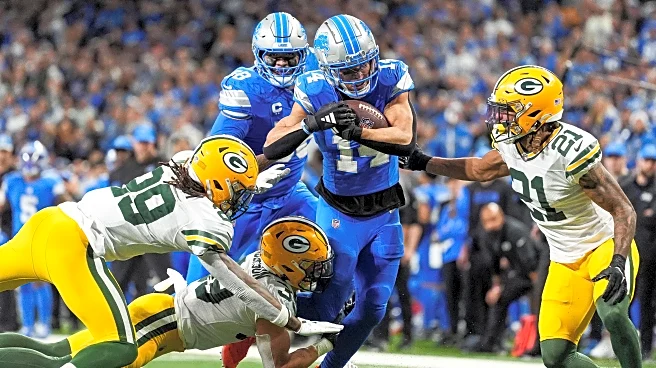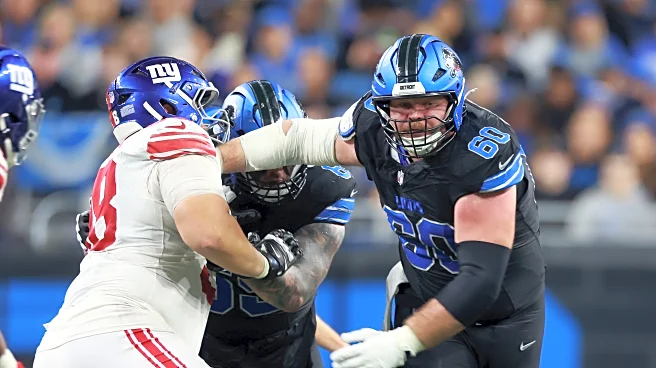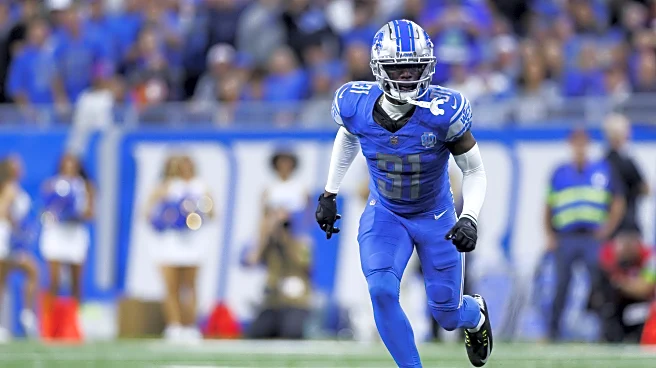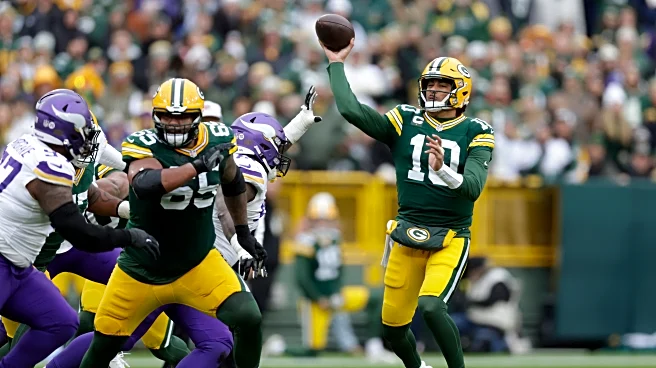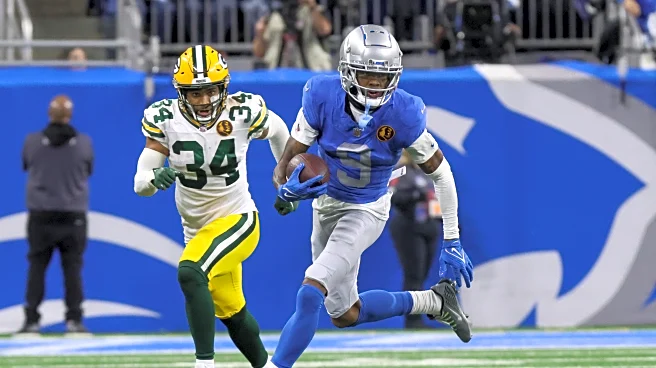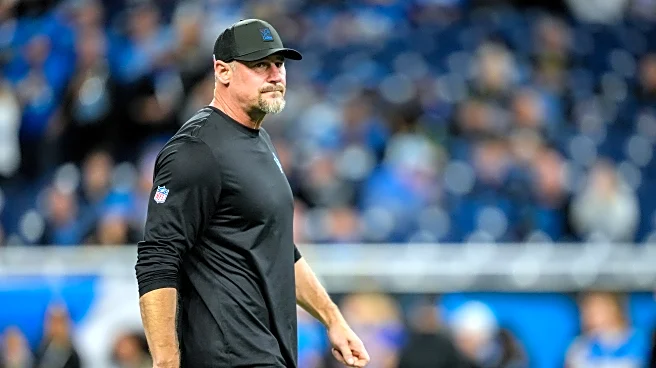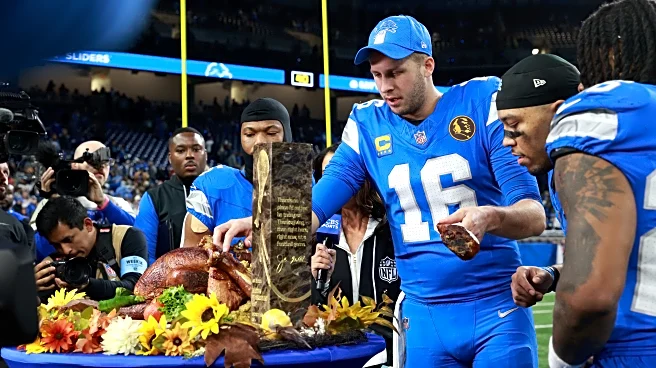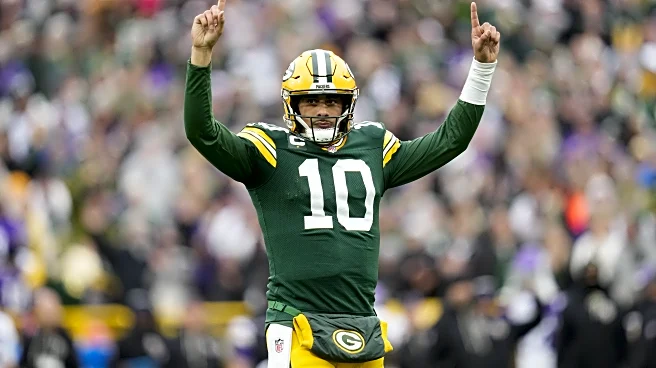The Green Bay Packers and Detroit Lions square off in a rematch of Week 1’s jarring triumph by Matt LaFleur’s team. Dan Campbell had previously won six of seven against LaFleur—including three straight
at Lambeau Field—before that opener snapped Detroit’s run of success. Both teams now sit looking up in the NFC North standings as they try to keep pace with the -3 point-differential, 8–3 Chicago Bears.
Since their hot start—manhandling the Lions and then the once-formidable Jayden Daniels-led Commanders in Week 2—the Packers have gone 5-3-1, marked by inconsistency and notable low-scoring setbacks to the Browns and Panthers, plus a tie against the Cowboys. The Lions defense will look to rebound after allowing an unprecedented number of explosive passes to the Jameis Winston and Wan’Dale Robinson-led Giants. Fortunately for Detroit, Jordan Love has been held under 200 passing yards in three straight games (and six of 11 this season), and Green Bay has failed to reach 300 total yards in three straight games (also six of 11).
Detroit’s defense needs to respond from its uncharacteristic showing against the Giants to keep the Packers offense from finding any rhythm. Meanwhile, the Lions offense remains in the shop for repairs and a tune-up but will aim to operate more efficiently than it did in Week 1. Prior to last Thanksgiving Day’s win over the Bears, the Lions had lost seven straight on the holiday as part of a stretch where they dropped 11 of 12 from 2001-12. To keep the winning momentum going, this preview digs into three key statistical matchups the Lions must control.
Note: Unless otherwise indicated, all statistics are sourced from NFL Pro, TruMedia, FTN Fantasy, or Pro Football Reference and exclude garbage time.
Packers going three-wide
The inconsistent stretches of the Packers offense from last year have carried into this season. They rank top-five in both success rate and EPA per play, yet sit 13th in points per game (23.9) with several other metrics outside the top 10. One area they’ve consistently generated movement however is out of 11-personnel. While they use 11-personnel (1 RB, 1 TE, 3 WR) only 55.7% of the time—20th in the NFL—it has been their most reliable and most explosive grouping. That reliance will likely increase without stud tight end Tucker Kraft.
Packers offense – 11-personnel
- 51.1% success rate (4th)
- 0.14 EPA/play (5th)
- 13.9% explosive play rate (5th)
- 17.0% explosive pass rate (2nd)
Despite a rotating cast of skill players, Matt LaFleur’s offense with Jordan Love has hit jackpot-level explosives out of 11-personnel this season. The Packers will be without Jayden Reed and Savion Williams, with Matthew Golden questionable (wrist), while Christian Watson (knee), Romeo Doubs (wrist), and Dontayvion Wicks (calf) will play but have recent ailments. Malik Heath (Week 11 healthy scratch) or Bo Melton (two catches in Week 10, had converted to CB) may also factor in, along with Luke Musgrave, John FitzPatrick, and Josh Whyle at tight end.
The Lions defense still leads the NFL in the rate of base-personnel usage—four defensive backs—at 62.9% of snaps. They’ve also used base on 26.0% of snaps against 11-personnel (2nd). Detroit placing a premium on allocating resources to stopping the run can create stress points when teams counter with lighter, three-receiver sets. Across all defensive alignment looks, the Lions have had mixed results defending 11-personnel.
Lions defense – Defending 11-personnel
- 5.7 yards per play (t-17th)
- 37.0% offensive success rate (1st)
- -0.03 EPA/play (19th)
- 13.0% explosive play rate (23rd)
- 16.6% explosive pass rate (27th)
- 6.9% explosive run rate (9th)
Down-to-down, Detroit wins more plays than any defense in football against 11-personnel—the league’s No. 1 success-rate defense. But the explosive plays allowed, especially through the air, remain a major flaw that undermines that consistency. That issue has started to define the otherwise promising Year 1 under new defensive coordinator Kelvin Sheppard, who now gets his first in-season rematch against the same offense. The hope is that returning contributors—D.J. Reed, Terrion Arnold, Marcus Davenport, Malcolm Rodriguez, and eventually Kerby Joseph—help curb those explosives, starting Thursday, and as they look to punch their ticket for January.
Third down cheese curds
The Packers’ third-down offense has been remarkable—and historically efficient—especially on third-and-long (7+). From that long down-and-distance, they’ve recorded a 44.8% conversion rate, that not only leads the NFL this season but ranks third-best of any team in the last 15 years, trailing only the 2011 Saints and 2018 Chiefs. The next-closest team this year, the Rams, sits at just 33.3%.
Jordan Love may still struggle with getting to his “easy buttons” on early downs, but on third-and-long he repeatedly pulls a rabbit out of his hat and a freaking bouquet of flowers from his sleeve.
Packer offense – Third-and-long (7+ yards)
- 10.6 yards per play (1st — next closest 8.5)
- +0.59 EPA/play (1st)
- 30.5% explosive play rate (1st)
- 28.8% explosive pass rate (1st)
- 42.9% explosive run rate (1st)
Green Bay’s offense suddenly wakes up when they’re backed into these normally unmanageable situations. Unsurprisingly, they lean heavily on 11-personnel in these moments—using it on 96.6% of third-and-long snaps (5th). Even with that predictable tendency, they still lead the league in virtually every metric listed above from 11-personnel.
Detroit, meanwhile, has been one of the worst defenses in football at defending third-and-long—despite being a top-tier third-down defense last season.
Lions defense – Third-and-long
- 31.1% third down conversion rate (30th)
- 8.3 yards per play (29th)
- -0.33 EPA/play (30th)
- 20.3% explosive play rate (31st)
- 24.1% explosive pass rate (31st)
- 7.7% explosive run rate (t-9th)
- 6.2 YAC/reception (25th)
- 39.7% pressure rate (24th)
To make matters worse, the Packers have excelled in third-and-long despite allowing a 48.2% pressure rate and only 4.6 YAC per catch in those situations. Pressure alone doesn’t derail Love there—which raises the burden for coverage, spacing, and tackling. If the Lions want to beat the Packers—and stay on track for January—they have to solve this down-and-distance.
Getting Goff Under Center
It remains unclear whose undercarriage Jared Goff will be working under with Graham Glasgow ruled out (and Frank Ragnow nearing a return). Whether it’s Trystan Colon or Kingsley Eguakun snapping, the Lions should lean more into under-center passing.
Since Jeff Hafley took over the Packers defense in 2024, Goff has consistently torn up Green Bay when dropping back from under center.
Jared Goff passing — Under center vs. Packers since 2024 (3 games)
- 38/43 passing (88.3%)
- 333 passing yards
- 7.7 yards/attempt
- 1 TD, 0 INT
- 106.7 passer rating
- 65.1% passing success rate
- 2.80 seconds time to throw
- 0 sacks
- 27.9% pressure rate
Goff has been incredibly efficient attacking the Packers from under center while avoiding negative plays. The zero sacks and sub-28% pressure rate are especially notable considering that on 65 shotgun dropbacks across their last three meetings, Green Bay has pressured him on 35.4% of attempts and sacked him six times. Going under center helps the offensive line present run/pass conflict, slows down the Packers’ front just enough to stabilize protection, and allows the Lions to find their rhythm. Leaning into that approach again would give Goff his best platform to operate.
Cloudy days for the Sun God
Amon-Ra St. Brown is one of the most valuable skill players in all of football, but he has found less success against the Packers since Hafley arrived.
Amon-Ra St. Brown per-game receiving vs. Packers since 2024
- 6.3 targets
- 5.3 receptions
- 48.0 yards (9.0 yards/reception)
- 2.3 YAC/reception
- 0.3 receiving touchdowns
- 18.8% explosive play rate
Despite a mixture of Eric Stokes, Keisean Nixon, and Javon Bullard rotating on him, St. Brown hasn’t been able to put his stamp on these matchups. Detroit will need him to snap that trend—and he should get the volume to do it, having drawn 25 targets over the last two weeks (11.5/game over his last six).
